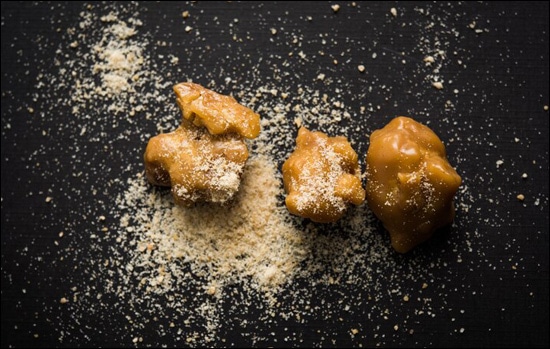Heeng (Asafoetida) – God Sent Gum for Health
Heeng ( Ferula asafoetida) is a well-known home remedy. It is used widely in our households. Heeng enhances the digestive fire and improves the process of digestion. It is explained in ayurvedic texts like Sushruta Samhita, Charak Samhita, and Vagbhata under Pippalyadi varg. Heeng is widely distributed in Afghanistan and nearby areas. Although there are new possibilities in India to grow the Heeng on a large scale. It is a native of Iran, Afghanistan, and Pakistan. A variety of Heeng F. narthex is also found in some areas of Kashmir.

Introduction
Heeng is a drug that helps to expel the wind from the stomach and pacify spasmodic disorders. Used in most Indian homes and famous for its peculiar odour, heeng is a resin of a plant that grows in the higher ranges of Kashmir, parts of Afghanistan, and Iran. ancient texts described it as Heengu and several centuries upon it the peculiarity of a tempting spice and trusted medicine. Heeng is bitter and pungent in taste and light, sharp, unctuous in taste and light, sharp, unctuous and hot in effect. While aggravating pitta it pacifies Vata and Kapha. Its chemical composition consists of gum, ash, and volatile oil. Heeng also contains protein, fibre, and minerals which include a substantial amount of calcium and traces of ions. Ayurvedic texts have categorised heeng as deepniya and restorer of consciousness). It is reputed as a drug that expels wind from the stomach and counteracts spasmodic disorders. Heeng also acts as a stimulant on the nervous and respiratory systems. It is an expectorant, killer of intestinal worms, and an emmenagogue (that promotes the menstrual cycle.
Key Points About Heeng
Heeng is a herbaceous plant of the well-known Umbelliferae family. It is a perennial plant having thick roots and rhizomes. It is globally found in Iran and Afghanistan. It is used in cooking as a chief ingredient. The cold and dry conditions are suitable for the cultivation of Heeng but it can also withstand 35-40 degrees temp. The roots of the plants are deep and fleshy. These roots store nutrients inside deep fleshy roots. Heeng helps to stimulate the intestinal and respiratory tracts and the nervous system. The bark of heeng plant is useful for simple digestive problems such as bloating, indigestion, and constipation.
Properties Of Heeng
Heeng are Katu rasa (pungent), laghu (easy to digest), Snigdha (unctuous), and teekshna (piercing). Also, heeng is Katu (pungent) in Vipaka and ushna (hot) in veerya. Heeng is used to balance the Kapha and Vata diseases. It is the drug of choice in gas trouble, distention of the abdomen, and colic. Heeng is a respiratory stimulant hence it is beneficial for a productive cough. As a nervine stimulant, ayurvedic texts recommend its use in a number of ailments like hysteria, paralysis, convulsions, and syncope.
Multiple Benefits Of Heeng
- Take two times a day with warm water, half a teaspoonful of heeng, crushed ajwain, and vidang to reduce inflammation. This combination in equal parts is also used to manage flatulent dyspepsia. This combination is also used to pacify the worm infestation problem. Heeng is very useful for females, especially after delivery as it promotes digestion and pacifies the gas and excessive distension.
- The 250 mg of Heeng mixed with a spoon of betel juice and honey is very good for various disorders like asthma, cough, and bronchitis.
- Heeng also acts as an antidote to opium and counters the effects if given to the patient in the same dosage. In fits, a patient can inhale the heeng or the medicines contain heeng as the main ingredient.
- Hingvastak churna before a meal with warm water is evident to enhance digestion. It is able to digest heavy and fried food. Heeng which is the main constituent of Rajapravartini vati is a drug of choice to manage painful menstruation.
Caution
Raw Heeng shouldn’t be used as it may cause nausea and is unsafe. Before using the Heeng it should be fried in desi ghee (clarified butter). It should be avoided in patients suffering from excessive hyperacidity, hemorrhagic disorders, piles, or excessive hypertension. Adulteration in Heeng is also a serious concern. Sometimes for adulteration gum of the keekar tree is added to it. Pure heeng can be examined by putting in a glass of water. If it is pure it will completely dissolve in water and a milky liquid can be seen. Another confirmatory test for the quality of Heeng is to burn it in flame, if it gets burnt after putting in a flame then it is pure, and vice versa.
Conclusion
Nature gives us plenty of herbs for health and happiness. It is important to follow the best quality things. As heeng can be used in powder form also as the name Heengvastak churna. The knowledge of such herbs is very important to avoid the increasing side effects of synthetic medicines and poor lifestyles. Although Heeng is not cultivated in India several projects are running for the cultivation of Heeng in India. But still, there are challenges for scientists regarding the Heeng cultivation due to the long-dormant phase and low seed germination rate.



